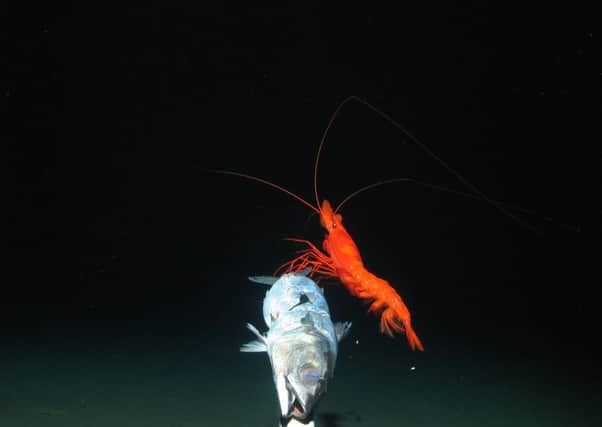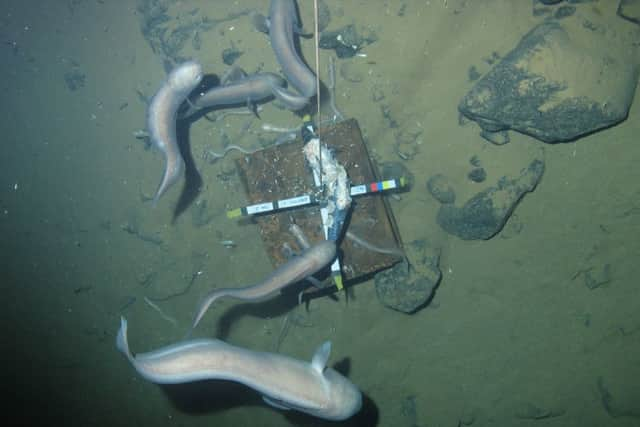Scots scientists find alien world on ocean floor


The investigation of the previously unexplored 7,200-metre trench – which lies east of New Caledonia, 1,000 miles north-west of New Zealand – revealed marine life there was far sparser and less varied than expected.
Researchers say their findings point to the possible impact climate change could have on deep-sea life.
Advertisement
Hide AdAdvertisement
Hide AdDr Alan Jamieson, of the university’s Oceanlab department, which worked with researchers from New Zealand, said the trench differed from others they had studied.


He said: “We set out to investigate whether the patterns of biodiversity in these medium-depth trenches could be predicted by trends that we have observed in the really deep trenches that we’ve already studied elsewhere in the Pacific Rim.
“But what we found was an entirely different deepwater fish community. Fish were surprisingly few in number and low in diversity and not at all what we expected. The fish we would always expect to see, the grenadiers, were completely absent. The fish that dominated the area were a group called cusk eels, which are far less conspicuous elsewhere.
“As well as the difference in biodiversity, we also stumbled across another surprise – the area in and around the New Hebrides Trench was swarming with large, bright red prawns, which are typically seen in very low numbers in other areas.”
To capture the images, the team used Oceanlab-designed ultra-deep unmanned cameras capable of working in the extreme conditions of low temperatures and high pressure.
Animal traps were used a total of 27 times between 2,000 and 7,000m.
The cameras and traps were also used multiple times in the neighbouring South Fiji Basin, which is 6,948m at its deepest.
There are more than 30 deep-sea trenches around the world, and most of these narrow fissures in the sea floor are in the Pacific Ocean.
Advertisement
Hide AdAdvertisement
Hide AdThom Linley, a marine biologist at Oceanlab, said: “The waters over a trench are what ‘feeds’ the deep-sea community and in this case it appears the prawns and cusk eels are specialists in low-food environments.
“This means the huge expanses of the deep Pacific Ocean that span the tropical regions are likely to be largely inhabited by the cusk eels and prawns rather than the more diverse communities we see around the Pacific Rim.”
Dr Jamieson, who has undertaken 11 expeditions to the ultra-deep trenches of the Pacific Rim, said his latest 30-day trip had unearthed “a wealth” of new information. He had obtained extremely rare samples of cusk eels, eel pouts, arrow-tooth eels and thousands of small crustaceans which are being curated in New Zealand and Australia.